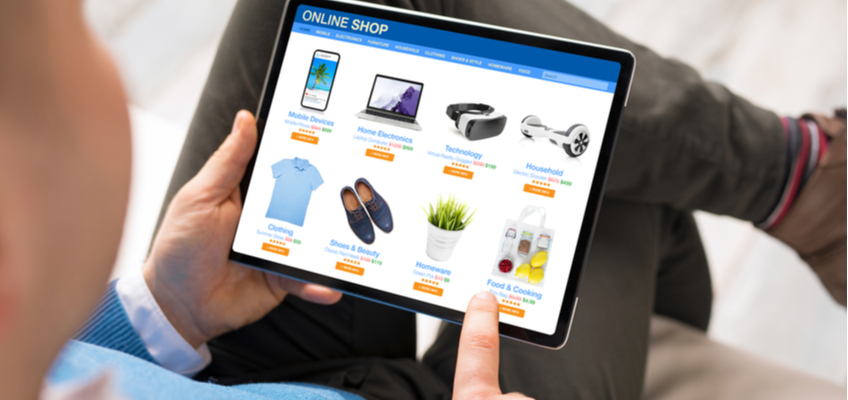
The Best 5 Tips To Boost Your Brand Presence On Amazon
So, you want to build your brand presence on Amazon. That’s often the goal for brands that are newly launching or making their debut on the Amazon marketplace.
Fortunately, Amazon provides several tools and programs to help you build your brand, grow your business, and succeed on the marketplace.
For most of our brand-building suggestions on Amazon, Brand Registry is a prerequisite, so start there. Registering your brand on Amazon is a best practice anyway to help you to protect your brand.


When you’re ready to invest resources into boosting your brand presence on Amazon, here are five strategies to try:
- Build an Amazon store
- Launch ‘Sponsored Brands’ campaigns
- Use audience-based targeting
- Try out PAT ads
- Leverage social selling on Amazon
For each of these boosts, we’ll tell you why it could be a valuable play for your brand and how to use it, including links to guides and tutorials to answer your detailed questions about these strategies.
Build An Amazon Store
If you have a brand on Amazon you really should have an Amazon Store. Don’t sit around considering whether to invest in a Store. Do this now. Once your brand is registered you have access to build a Store and there’s actually no financial cost to you. So what are you waiting for?
Here’s why you want a Store. It’s essentially a free mini website for your brand within the Amazon.com site. Shoppers can get to it by clicking on your brand in product listings. You have a lot of freedom to choose how you’ll organize your Store and what products you’ll feature.
Use the Store to build your brand and to guide customers through your catalog. The Store is an excellent place to use your brand colors and style, utilize lots of images, and give your shoppers a brand experience. Depending on how you organize the page, you can help customers understand your catalog’s extent and how to find your products that suit their needs.
We recommend driving Sponsored Brands ad traffic to a Store because that typically produces better results than driving them to a product list. Sponsored Brands are next on our list of brand-building tips.


Launch Sponsored Brands Campaigns
Amazon Sponsored Brands are a great tool for meeting shoppers during their shopping journey and introducing them to your brand and products. They’re a PPC ad type that you can build and manage yourself within the Amazon ad console.
There are a couple of things that are great about Sponsored Brands. First, if you’ve been relying solely on Sponsored Products, then Sponsored Brands are going to introduce the ability to use brand assets in your on-Amazon marketing. They include copy, graphics, and optionally, video as well. This of course means you’ll need to have these assets on hand or create them to use in these ads.
Another helpful aspect of Sponsored Brands is that they allow you to promote multiple products at a time, rather than a single product. The ad itself can feature up to three products when it is served, and as stated above, it’s a good idea to point Sponsored Brands at a well fleshed out Brand Store to keep the brand experience rolling for the customer.
One way to measure the success of Sponsored Brands is with the new-to-brand metric which gives you information about shoppers who haven’t purchased from your brand in the past year, a helpful way to determine whether your brand-building efforts are bringing new customers to your brand.
Use Audience-Based Targeting
There are brand plays to be made at the Sponsored Products level as well. You might not think of Sponsored Products for brand-building because, well, the ad type with “brand” in its name is Sponsored Brands. But your brand, and your competitors’ brands, are at play in this ad type too.
As brands grow, they become better known on Amazon, and their ad budgets grow, it’s smart to implement a campaign structure that takes brand awareness into account. We recommend breaking out keywords into separate campaigns based on whether they’re branded, generic, or competitor terms.
We call this audience-based targeting because it takes the intent and awareness of the audience into account. Is the audience already aware of and interested in your brand? They might search for your branded term “Crayola crayons.” Are they just looking for any solution to their crayon needs? They might search for a generic term like “crayon box.” Are they thinking about a competitors’ offering? Maybe they search for “Prang crayon set.”
When you bucket these keyword types you can make decisions about how to allocate your ad budget. Usually, brands should limit ad spend on their own brand terms because they can risk cannibalizing their organic placements, but it’s a good idea to keep some spend here to defend against competitors. How much you allocate for branded terms will depend on what you know about your competitors and how badly you want to take away their business.
If you’re Crayola and you’re bidding on “Prang crayon set” your product can come up in that search and the shopper might be reminded of your brand and decide they’d rather have your product.
Try Out PAT Ads
Another way to gain digital shelf space and grow brand awareness is through product attribute targeting (PAT). With this type of ad, instead of bidding on keywords, you’ll be bidding on ASINs, categories, or other product attributes.
There are a few great ways to use PAT ads to boost your brand presence. You can target competitor products to steal customers away from those products. This works especially well if you can offer a lower price, have better ratings, or are otherwise offering some benefit to choosing your product over theirs.
Defend your market share by targeting your own products. This encourages shoppers to stick with your brand and get to know your product line better. Plan these ads carefully so that you’re making complementary offers. If a shopper is considering purchasing new shoes, maybe they should also consider your shoe polish. Occupying this ad territory also prevents your rival shoe polish purveyor from claiming that space and getting the shopper to buy from their brand to care for the shoes they’re buying from you.
Also, be on the lookout for opportunities to give your brand a boost by piggybacking on the success of other brands. If your product or brand is entirely new, getting it to show up every time a well-established brand appears is a great way to introduce it to an audience of potential converts. Likewise, if your product is more established but a competitor brand makes waves because it’s the new hot thing on TikTok or other social media, steal some of the spotlight by targeting their products.
Leverage Social Selling on Amazon
Speaking of social media, don’t neglect social selling opportunities native to Amazon. Shoppers are pretty comfortable these days with discovering brands and making purchases within their social media experiences. So meet shoppers in the mindset they enjoy, but deploying Amazon’s own social media-like tools.
Amazon’s social offerings include Amazon Live which is analogous to livestreams on Facebook or TikTok and Amazon Posts which is analogous to Instagram. The great news is that these programs are free to participate in and you can often revise and repurpose content from other channels to work for you on Amazon.
Similar to a brand Store, social selling programs allow you to not only showcase your products but to use media assets to give your audience the brand feel and experience you want them to have.
Shoppers can follow your brand to stay engaged with your new content. With Live they can even interact with you through chat. All this gives you increased chances to move those shoppers from followers to buyers.
Test These Tips Out
So there you have it, five ways to boost your brand presence on Amazon. Most of them require brand registry. Two of them are free for registered brands. Three of them are ad strategies you may not have tried.
All of them can help strengthen your brand’s presence so Amazon shoppers are more likely to think of you and more likely to purchase from you. If they’re new for you, it’s worth running tests, analyzing performance, and using that information to determine what to back off of and what’s worth doubling down on.
If you could use help strategizing for these ad types, structuring the ads, and automating bidding, we’d like to help. Teikametrics Flywheel optimizes ads on Amazon and our analysts have deep expertise managing ads for the Amazon marketplace (and for Walmart too!). Request a demo to speak with our team about your opportunity on Amazon.
Happy brand building!
About Teikametrics
Teikametrics helps sellers and brand owners grow their businesses on Amazon and Walmart.com through the combination of data, AI-powered technology, and marketplace expertise. Request a demo.






